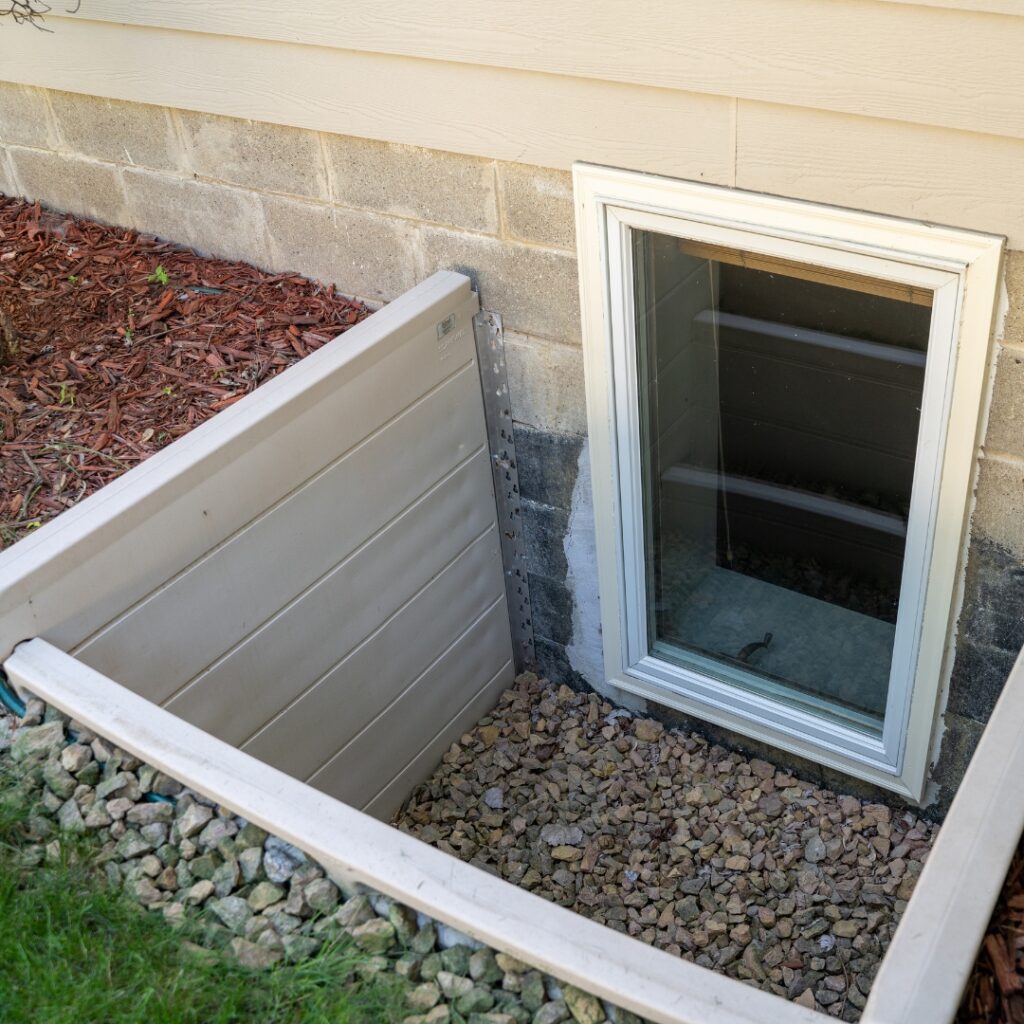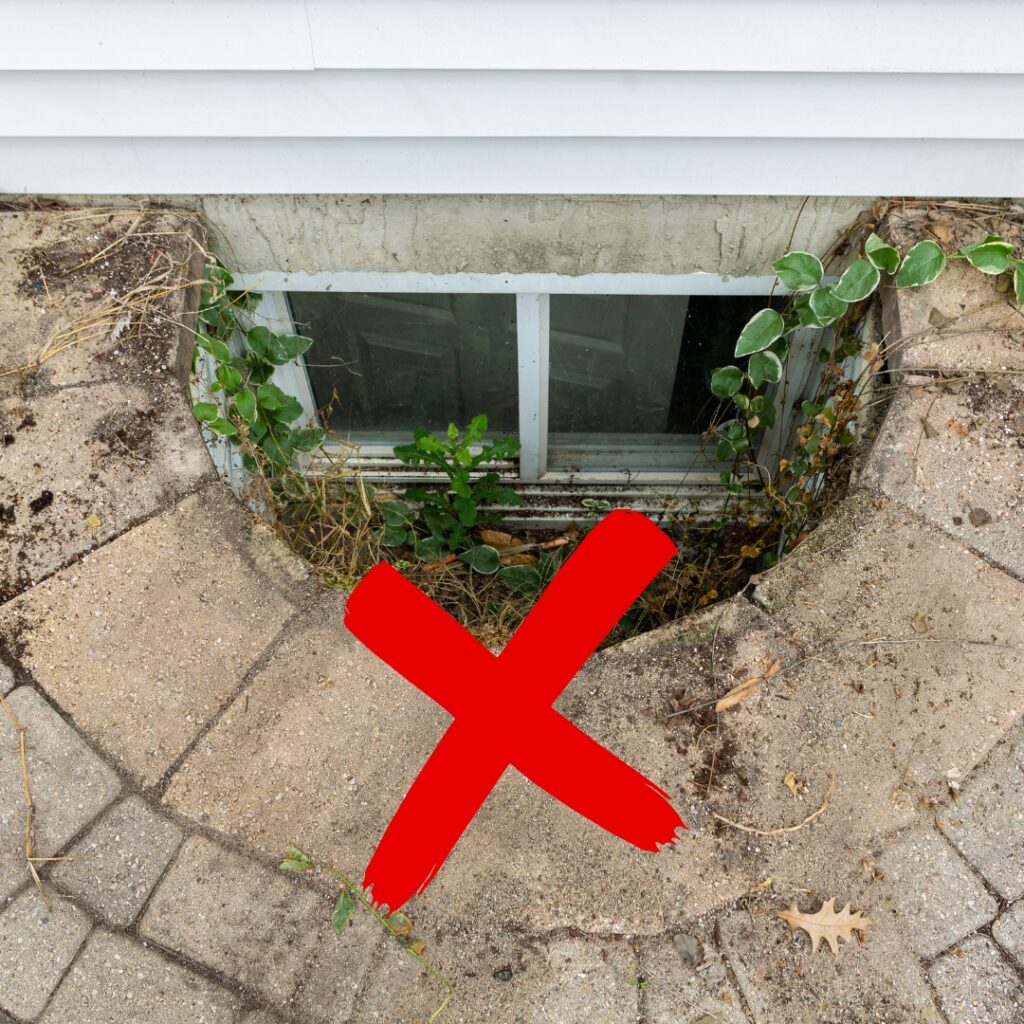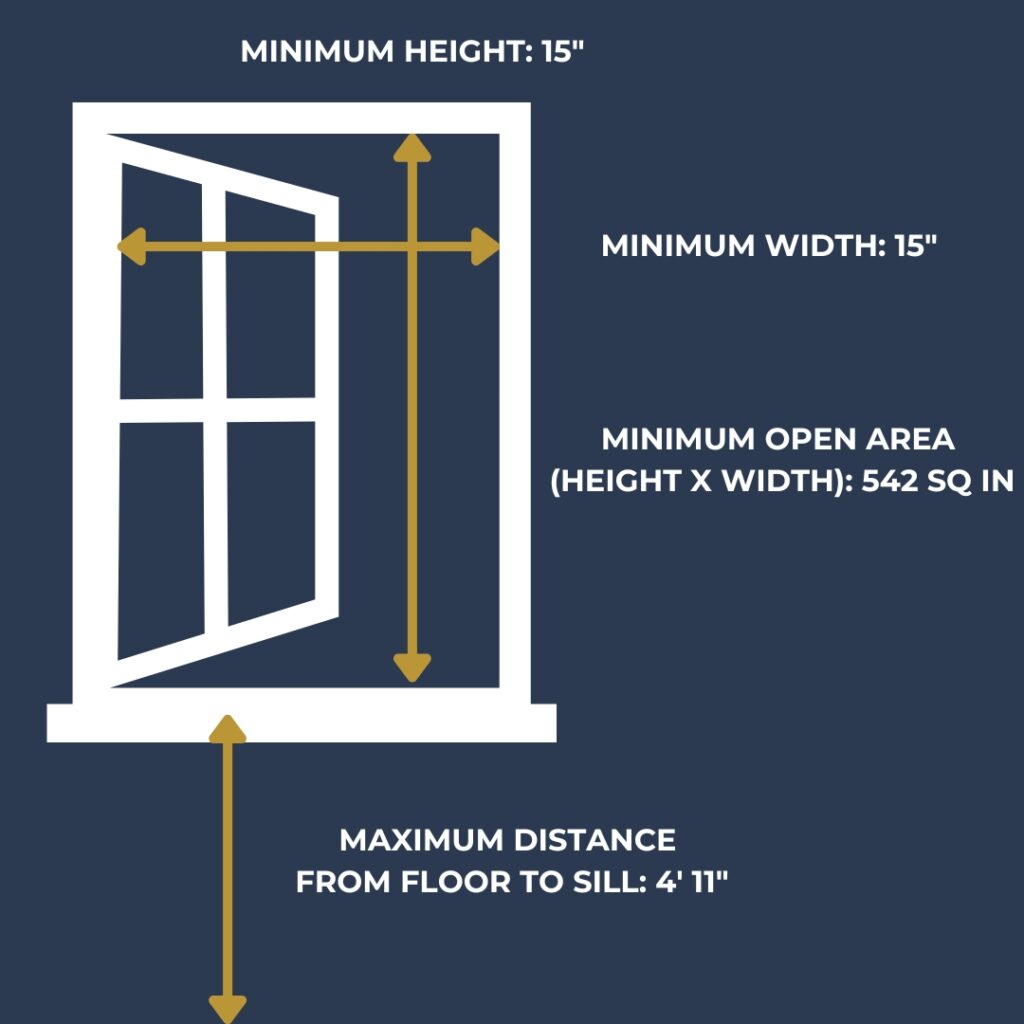Whether you’re buying or selling a home in New Brunswick, one of the most commonly misunderstood features of a property is the egress window. Understanding egress window New Brunswick requirements is critical—they’re not just a technicality or a checklist item—they’re about safety, usability, and, in many cases, legal compliance.
In this post, I’ll walk you through what an egress window is, how to know if a window qualifies, how to measure and assess them, what your options are for upgrades, and why it all matters in a real estate transaction.
What Is an Egress Window?
Many people assume egress windows are only required in basements, but that’s not the case. Any room used as a bedroom—whether it’s on the first floor, second floor, or below grade—must have a compliant egress window or a direct exit to the outside This is especially important if you plan to rent out living space to somebody else.
An egress window is a window that meets specific size and accessibility standards to serve as an emergency exit. According to the National Building Code of Canada (NBC), any bedroom must have either a door to the outside or a window that qualifies as a legal egress.
These standards are designed to allow a person to exit (or a firefighter to enter) in the event of an emergency, like a fire. For homes with basement bedrooms in New Brunswick, egress windows are especially important.


Canadian Building Code Egress Window Requirements
Under the NBC 2020, a window must meet the following criteria to qualify as egress:
- Minimum Unobstructed Opening Area: 0.35 m² (542 in²)
- Minimum Opening Dimensions: No dimension less than 380 mm (15″)
- Maximum Sill Height: No more than 1.5 m (59″) from the finished floor
- Operation: Must open without tools or special knowledge
- Opening Support: Must remain open without props or additional support
- Bars/Screens: Must be removable from the inside without tools
- Window Wells: If the window opens into a well, there must be at least 760 mm (30″) clearance in front of the opening, and the window must be able to open fully without obstruction.
- Access: A clear path must be available to exit directly to the outside
These dimensions refer to the clear opening of the window—not the glass size or frame dimensions. If you’re evaluating an egress window in New Brunswick, be sure to confirm these details on-site.
How to Measure for Egress
To determine if a window meets egress requirements:
- Open the Window Fully: Remove screens or grilles that may block access.
- Measure the Opening:
- Height and width of the actual clear opening
- Multiply these dimensions to confirm the opening is at least 0.35 m² (542 in²)
- Make sure neither dimension is less than 380 mm (15″)
- Measure the Sill Height: Confirm the window sill is no more than 1.5 m (59″) from the finished floor
- Check the Operation: Ensure it opens easily and stays open without needing to be propped.
- Check External Obstructions: If the window is in a window well, confirm 760 mm (30″) clearance in front of the opening and ensure the window can open fully without hitting the well.
These measurements are especially important when buying or selling homes with basement bedrooms in New Brunswick, where egress window requirements must be met to legally count a space as a bedroom.

Risks of Non-Compliant Egress Windows
From a real estate perspective, non-compliant windows in bedrooms pose several concerns:
- Safety Risks: In a fire, a non-egress window could mean a bedroom has no safe exit.
- Legal Concerns: A room advertised as a “bedroom” must meet egress standards to comply with building codes.
- Insurance Implications: Claims may be denied if injury or death occurs due to a lack of egress.
- Appraisal Issues: A home may be appraised as having fewer bedrooms, impacting value. An additional legal bedroom or two in a basement can increase the market value of a home significantly.
Buyers and sellers should always verify basement bedrooms meet egress window New Brunswick standards.
What If a Window Doesn’t Meet Egress?
There are a few common options for upgrading to an egress-compliant window:
- Replace the Window: Install a larger window unit that meets the minimum dimensions.
- Lower the Window Opening: This may involve cutting into the foundation wall.
- Expand the Window Well: Ensure it meets the 760 mm clearance and provides proper drainage.
- Add a Step or Ladder: If the window well is deep, steps or a built-in ladder may be required for safe exit.
If you’re planning an upgrade to meet egress window New Brunswick requirements, work with licensed professionals and check with local inspectors to ensure compliance.
Why Upgrading Makes Sense When Selling
If you’re selling a home with a room that could function as a bedroom but doesn’t have an egress window, you’re likely leaving money on the table. Adding a compliant window can allow you to legally market the room as a bedroom, potentially increasing the home’s value and appeal to buyers.
It also shows prospective buyers that the home has been updated with safety and compliance in mind—which builds trust and helps your listing stand out in the New Brunswick market.
Final Thoughts (and a Quick Disclaimer)
Egress windows aren’t just about ticking boxes—they’re about keeping people safe, protecting property value, and ensuring your home meets current standards.
Always check with your local building authority, as some municipalities in New Brunswick may have additional requirements beyond the National Building Code.
If you’re unsure whether a room meets code, or if you’re thinking about buying or selling a property with basement bedrooms, I’d be happy to help you understand your options and evaluate your current or future egress windows. Reach out anytime, here.